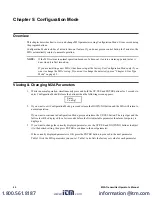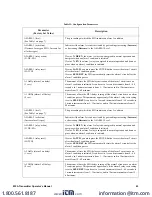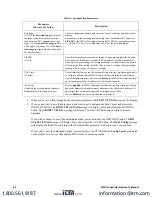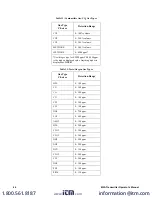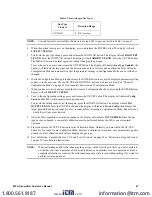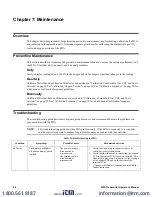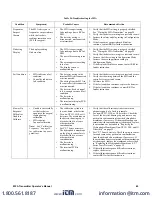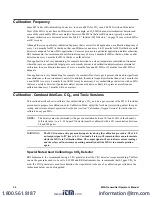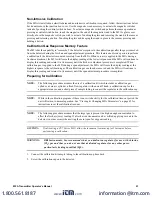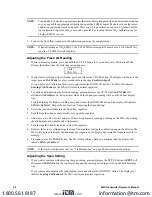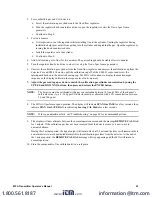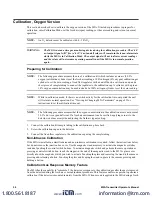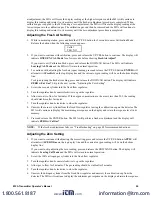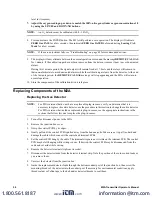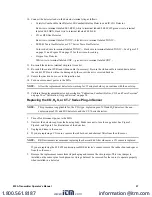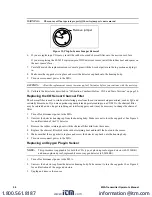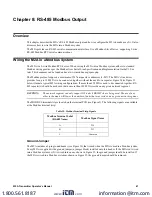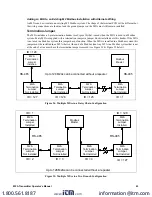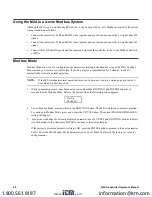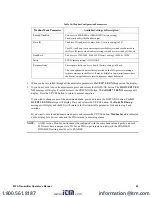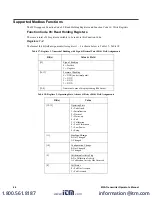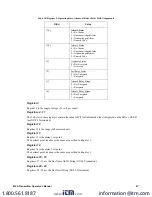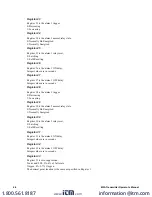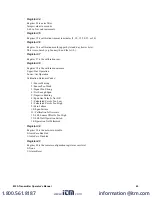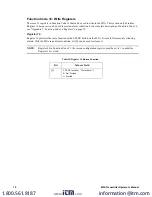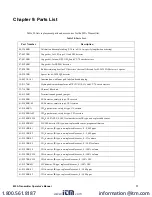
56
M2A Transmitter Operator’s Manual
level in its memory.
7. Adjust the oxygen reading up or down to match the 100% nitrogen cylinder oxygen concentration of 0
by using the UP/YES and DOWN/NO buttons.
NOTE:
An O
2
detector must be calibrated with 0 - 18% O
2
.
8. Press and release the ENTER button. The M2A will perform a zero operation. The display will indicate
ZERO Gas PASS
for a few seconds, then indicate
ZERO Gas SAVED
before indicating
Leaving CAL
Mode
for a few seconds.
NOTE:
If the zero adjustment fails, see “Troubleshooting” on page 48 for recommended actions.
9. The display will now alternate between the normal operation screen and the message
REMOVE CAL GAS
for 1 minute. If the calibration gas has not been removed from the detector remove it now to avoid unwanted
alarms.
During this 1 minute period, the signal output will remain fixed at 17.4 mA and the relays will remain in
their non-alarm state to avoid unwanted alarms while the calibration gas clears from the detector. At the end
of the 1 minute period, the
REMOVE CAL GAS
message will stop appearing and the M2A will return to
normal operation.
10. Store the components of the calibration kit in a safe place.
Replacing Components of the M2A
Replacing the Gas Detector
NOTE:
For M2A versions that do not have a replaceable plug-in sensor, or if you determine that it is
necessary to replace the entire detector, use the procedure in this section to change the entire detector.
For M2A versions that include a replaceable plug-in sensor, see the appropriate instructions in the
sections that follow this one to replace the plug-in sensor.
1. Turn off or disconnect power to the M2A.
2. Remove the junction box cover.
3. Grasp the control PCB by its edges.
4. Gently pull until the control PCB is pulled away from the banana jacks. Take care not to pull too hard and
damage the cable which connects the control and terminal PCBs.
5. Let the control PCB hang by the cable. The terminal strips are now visible on the terminal PCB. The control
PCB may be left hanging while wiring is done. If desired, the control PCB may be disconnected from the
cable and set aside while wiring.
6. Remove the detector terminal strip from its socket.
7. Disconnect the detector leads from the detector terminal strip. Note the position of the color-coded leads as
you remove them.
8. Unscrew the detector from the junction box.
9. Guide the replacement detector leads through the bottom conduit port of the junction box, then screw the
mounting threads of the detector into the conduit port. If necessary for environmental conditions, apply
thread sealant or Teflon tape to the hub and/or detector threads to seal them.
www.
.com
1.800.561.8187

